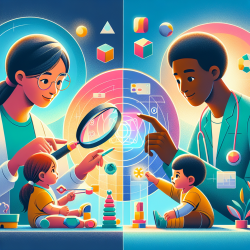In the demanding world of occupational therapy, especially within the educational sector, professionals often find themselves on the brink of burnout. The challenges are manifold, from managing a high caseload to ensuring each student receives tailored, effective support. However, the integration of technology into therapy practices presents a transformative opportunity. This shift not only promises to elevate the quality of speech therapy in schools but also to mitigate the overwhelming pressure therapists face.
One of the pivotal advancements is the adoption of online therapy services, such as those provided by companies like TinyEYE. These platforms enable therapists to deliver sessions remotely, breaking down the barriers of time and location. This flexibility is crucial for occupational therapists who are striving to balance their professional responsibilities with personal well-being.
The benefits of incorporating technology into therapy sessions extend beyond logistical conveniences. Digital tools can offer a plethora of interactive, engaging resources that can be customized to each student's needs, thereby enhancing the effectiveness of therapy. For occupational therapists, this means being able to provide high-quality, impactful sessions that can lead to better outcomes for students needing speech therapy in schools and other therapeutic services.
Moreover, technology can play a significant role in reducing the administrative burden on therapists. With the right software, therapists can streamline documentation, scheduling, and communication with teachers and parents. This efficiency not only frees up more time for direct student interaction but also contributes to reducing feelings of burnout.
In conclusion, as occupational therapists navigate the complexities of providing therapy in schools, embracing technology can offer a pathway to not only enrich student outcomes but also enhance their own professional satisfaction and resilience. The journey towards integrating technology into therapeutic practices is not without its challenges, but the potential rewards for both therapists and students are immense.










